Can Shoes Improve Your Child’s Low Muscle Tone? – What a Difference Shoes Can Make!
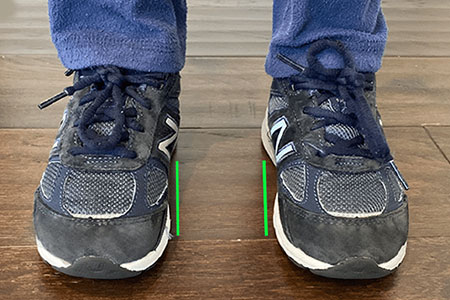
Has your child’s doctor advised you to get supportive shoes to help improve your child’s posture and balance but didn’t specify which styles to get? Supportive shoes play a crucial role in providing the necessary stability and alignment to help children with low muscle tone improve their mobility and confidence, thereby enhancing their overall quality of life. I have helped several children with low muscle tone find the correct pair of shoes for their feet, and I am confident that I will be able to help your child as well.
What Is Low Muscle Tone?
The medical term is Hypotonia, but most parents know this condition as low muscle tone. This condition is simply a lack of tone in muscles, which can make your children’s muscles feel too relaxed, leading to challenges in muscle control and stability.
I want to clarify a common misconception about low muscle tone. Several families associate low muscle tone with children being weak. This is far from the truth, low muscle tone is a stability problem, not a strength problem. Your child can be incredibly strong and still have low muscle tone.
Do Most Children with Low Muscle Tone Have Flat Feet?
I have noticed throughout the years how many children with low muscle tone have flat feet, and children with flat feet tend to have poor balance and coordination.
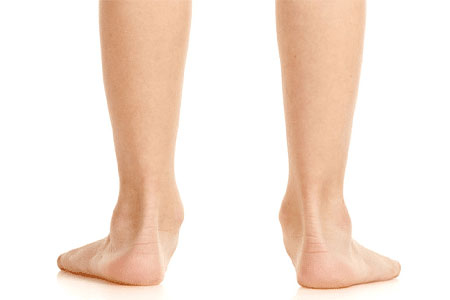
Before and After Images of Children with Low Muscle Tone
Visual evidence can be a powerful tool in understanding the impact of supportive shoes. The images below showcase the improvement in a child’s posture and gait after transitioning to supportive footwear.
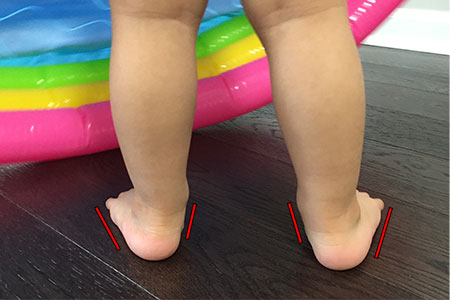
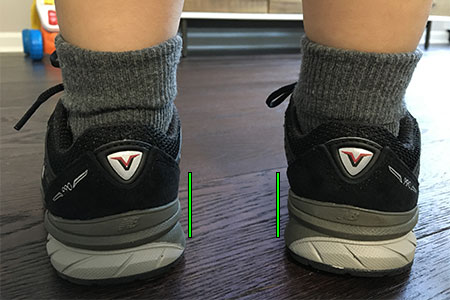
Don’t Play the Waiting Game – Be Proactive!
Parents come to the children’s shoe store where I work telling me that their pediatricians recommended waiting until the child reaches the age of five to intervene, but the parents are still worried as the child has clear signs of poor alignment and is developing poor posture habits already.
By age five, children have to optimize their functioning foot-joint alignment and weight-load distribution by wearing supportive shoes or orthotics (depending on the degree of their foot condition). So why not take early action? All I recommend doing is giving the child structural support which is not going to take away from the musculature. We are not making the muscles weak. Why wait until age five if the misalignment may become more severe?
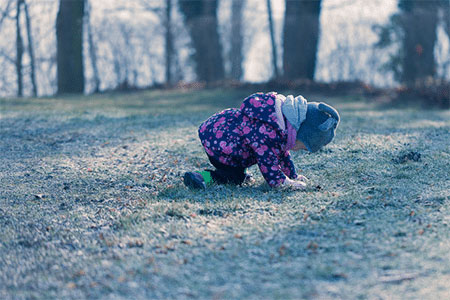
I always explain to parents that it’s not a matter of age. It’s a matter of whether or not we can improve the child’s walking gait and overall posture. I have seen many, many kids stand up and walk straighter—even run for the first time—after being fitted with the correct pair of shoes. In some cases, an orthotic might need to be fitted inside the shoes, but it all starts with a pair of supportive shoes.
Low Muscle Tone Is Not A Phase!
Don’t expect low muscle tone to simply go away one day. It’s not something kids outgrow, no matter how much they exercise. Muscle tone doesn’t really change. That’s why it’s important you get help, the sooner the better. Without it, your child will continue to fall behind and develop bad habits.
Physical therapy is a great place to start, but I have noticed how the correct type of shoes and in certain cases orthotics, are some of the most effective ways to treat low muscle tone. Certain shoe styles might guide your children’s feet into proper alignment and provide an instant boost to your child’s stability and confidence.
Key Shoe Features for Kids with Low Muscle Tone
1 Supportive Outsoles: This feature helps distribute weight evenly across the foot, reducing strain on muscles and ligaments. This support is essential for preventing foot fatigue and encouraging a natural walking pattern, which is particularly important for children who may experience pain or discomfort due to low muscle tone.
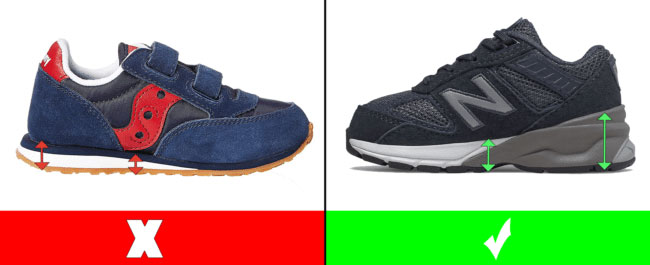
2. Firm Heel Counters: A firm heel counter provides stability and prevents the foot from rolling inward or outward. This feature is vital for maintaining proper alignment and reducing the risk of injury, as it holds the heel in place and supports the natural movement of the foot.

3. Lightweight and Flexible: While the shoes need to be supportive, they need to be lightweight and flexible at the same time. A lightweight and flexible shoe allows for natural foot movement, encouraging muscle engagement and growth.
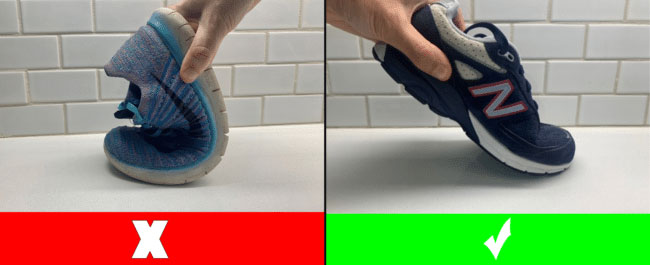
4. Straight Lasts: A straight last is a shoe construction where the sole is straight from heel to toe. This design provides better support and alignment for children with low muscle tone, helping to stabilize their feet and promote a natural gait. The straight last helps in distributing the body weight evenly, which is particularly beneficial for children who struggle with balance and posture.

In addition to providing these important features, the shoes must fit the unique shape of your child’s feet perfectly. Children’s feet come in all shapes and sizes, and some children might have narrow feet while others might have wide feet.
The shoes I recommend are available in different widths so please make sure that you choose your child’s foot width accordingly. Disclosure: Some links in this post may be affiliate links and we may receive a small commission (at no extra cost to you) when you click our links and make purchases.
Best Shoes for Kids with Low Muscle Tone to Improve Posture and Balance
The shoes I recommend are supportive but lightweight and flexible at the same time to help prevent your child’s feet and legs from easily getting tired.
1. Shoe Style 990v6 by New Balance
This is the absolute best shoe if your child has low muscle tone. The robust outsole helps distribute weight evenly across the foot and reduces strain on the muscles and joints. The downside that many parents complain about is the high price tag.
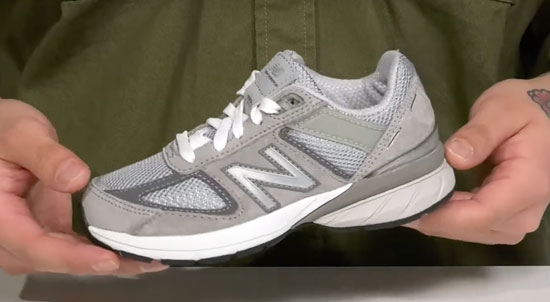
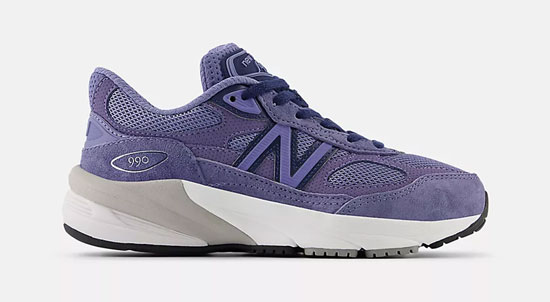

Key Features
- Available for toddlers, little, and big kids.
- You can order the 990v6 with laces on the New Balance website, Amazon, or Zappos.
- Available in medium, wide, and extra wide widths.
- Also available in pink and navy blue.
- There is also a Velcro version of these shoes available in navy blue and pink.
- I suggest that you get this shoe a half size larger than your child’s current foot size.
2. Shoe Style Gabi by Memo (Orthopedic Shoe)
These orthopedic shoes are specifically designed to improve foot posture and stability. The higher price point is a common complaint parents have but the investment in orthopedic shoes is often justified by their specialized design and effectiveness in addressing flat feet.


Key Features
- Available for toddlers and little kids.
- You can order the shoe style Gabi by Memo on Amazon.
- Fits medium and wide feet.
- Also available in a Mary Jane style and a version for older kids called Memo Polo.
- I suggest that you get this shoe a half size larger than your child’s current foot size.
3. Shoe Style Elliott by Stride Rite
These high-top booties by Stride Rite offer excellent support and a comfortable fit, making them a top choice for kids with hypotonia. This shoe is affordable and despite the limited color choices, the Elliott shoes are celebrated for their supportive qualities and comfortable fit.
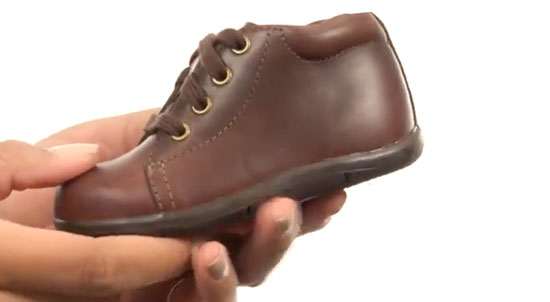
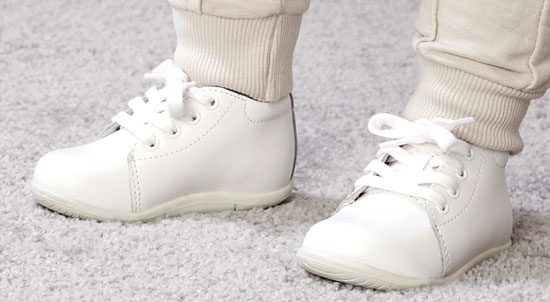
Key Features
- Available for toddlers.
- You can order the shoe style SRT Elliot by Stride Rite on Amazon or Zappos.
- Available in medium, wide, and extra wide widths.
- I suggest that you get this shoe a whole size larger than your child’s current foot size.
4. Shoe style 574 by New Balance
This New Balance shoe combines style with functionality. It offers solid support and cushioning, making it suitable for kids with flat feet and low muscle tone. The shoe is offered at a lower price point.
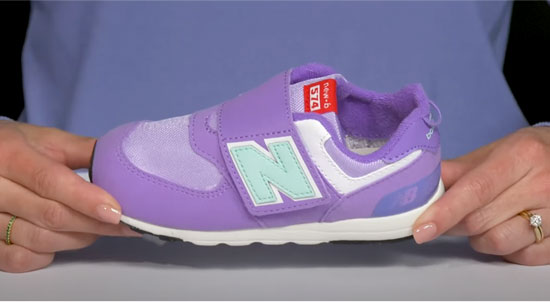
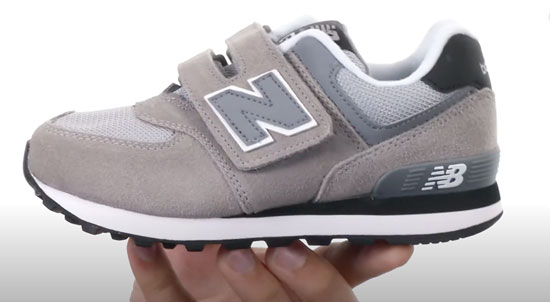
Key Features
- Available for toddlers, little, and big kids.
- Order the shoe style 574 New-b V1 by New Balance on Amazon or the New Balance website.
- Available in medium, wide, and extra wide widths.
- Also available with laces on the New Balance website, Amazon, and Zappos.
- I suggest that you get this shoe a half size larger than your toddler’s current foot size.
5. Shoe Style Tracks by Timberland
The sturdy design ensures that children can enjoy outdoor activities without compromising on foot stability or comfort, but this style is slightly heavier than my other shoe recommendations.
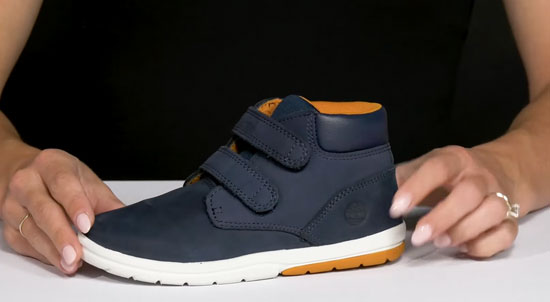

Key Features
- Available for toddlers and little kids.
- Order the shoe style Tracks by Timberland on Zappos or Amazon.
- Fits medium and wide feet.
- Water-friendly
- I suggest that you get this shoe a whole size larger than your child’s current foot size.
6. Shoe Style Cohesion by Saucony
These shoes are ideal for kids with hypotonia, as they offer excellent cushioning and stability. The affordable pricing also makes them accessible to a wide range of families.
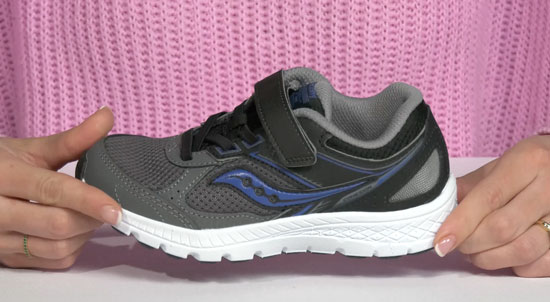
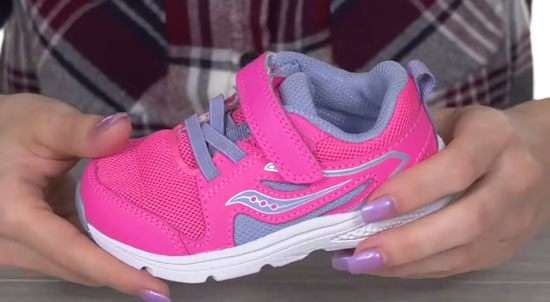
Key Features
- Available for little and big kids.
- Order the shoe style Cohesion KDZ on Zappos or Amazon.
- Available in medium and wide widths.
- Also available with laces on Zappos and Amazon.
- I suggest that you get this shoe a whole size larger than your child’s current foot size.
7. Shoe Style Fresh Foam Arishi v4 by New Balance
This is a versatile shoe that provides a soft and comfortable fit while supporting your child’s flat feet and low muscle tone. Families appreciate how this shoe is offered at a very reasonable price.
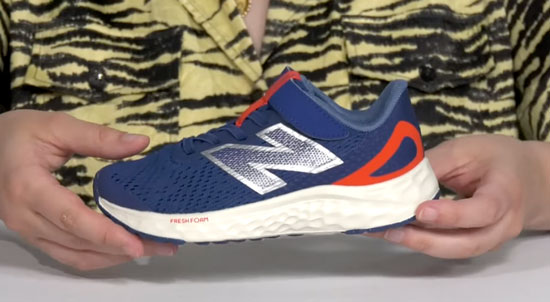
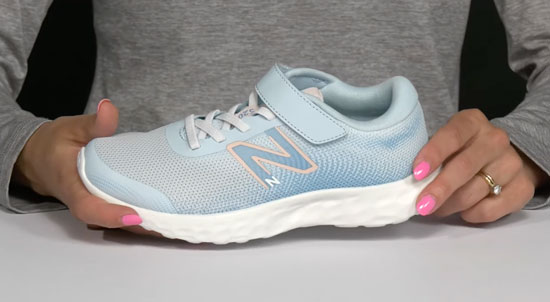
Key Features
- Available for toddlers, little, and big kids.
- Order the shoe style Fresh Foam 650 by New Balance on the New Balance website or Amazon.
- Available in medium, wide, and extra wide widths.
- Also available with laces on Zappos and Amazon.
- I suggest that you get this shoe a whole size larger than your child’s current foot size.
8. Shoe Style 2002 by New Balance
The 2002 model by New Balance is another great option for kids with low muscle tone at a more affordable price point than the 990v6.


Key Features
- Available for toddlers, little, and big kids.
- Order the shoe style 2002 by New Balance on the New Balance website.
- Available in medium and wide widths.
- I suggest that you get this shoe a whole size larger than your child’s current foot size.
9. Shoe Style Cross Em Up by Adidas
The Cross Em Up by Adidas is a basketball-inspired shoe that offers great support for kids with low muscle tone. The versatility of the shoe makes it suitable for both sports and everyday wear, adding value for parents looking for multi-functional footwear.
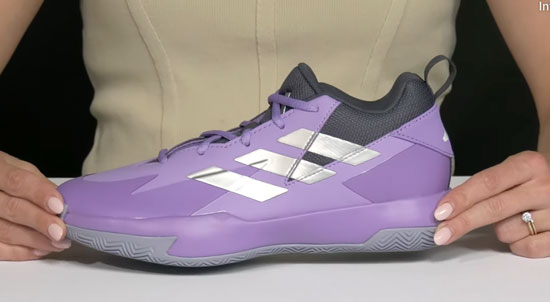
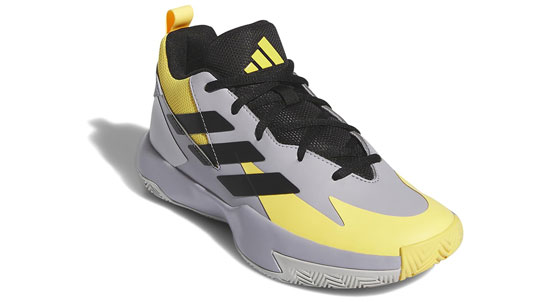
Key Features
- Available for little and big kids.
- Order the shoe style Cross Em Up Select by Adidas on Zappos or Amazon.
- Available in medium and wide widths.
- I suggest that you get this shoe a whole size larger than your child’s current foot size.
10. Shoe Style GT-1000 by Asics
The GT-1000 by Asics is a popular choice for kids who require extra stability and support. This specific shoe is capable of fitting children with narrow feet.

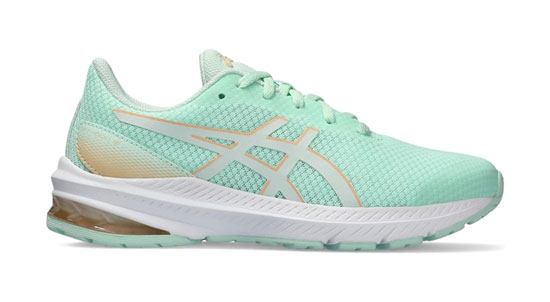
Key Features
- Order the shoe style GT-1000 by Asics on Zappos or Amazon
- Available for little and big kids.
- Fits narrow or medium feet.
- I suggest that you get this shoe a whole size larger than your child’s current foot size.
Contact Me for Personalized Shoe Recommendations
As a passionate shoe fitter, I am here to help you find the perfect pair of shoes for your child. If you have questions or need personalized recommendations, feel free to reach out. Together, we can ensure that your child receives the support they need for healthy foot development and improved mobility. If you have any questions or need any further assistance, you can also contact me via email and I will get back to you as soon as possible.
Families Testimonials – Get Inspired!
Many families have experienced positive changes after choosing the right supportive shoes for their children. Here are a few testimonials from parents who have seen the benefits firsthand:


Keep in mind that in certain cases the child might need an orthotic to be fitted inside of the shoe for extra support and stability. You should always start by trying a pair of supportive shoes and monitoring how the child walks in them. If after wearing the shoes for 3 to 5 months you don’t see any improvement, then I recommend fitting an orthotic inside of the shoes.
Best Orthotics for Kids with Low Muscle Tone
The orthotics I recommend for children with low muscle tone are the least restrictive ones as they allow for the normal movement of the foot. One of the main reasons why this orthotic works so efficiently for children with low muscle tone is that it provides a deep heel cup (30mm to be more precise) that provides stability and improves the child’s walking gait.
The orthotic below is the best prefabricated on the market for helping treat and control low muscle tone. One of the main goals of this orthotic is to prevent your child’s balance be affected by their low muscle tone.
Additional Resources for Children with Low Muscle Tone
While supportive everyday sneakers are essential, don’t overlook the importance of supportive sandals for warmer weather.
Even though low muscle tone is a common condition, it shouldn’t be left untreated. In fact, if left untreated, low muscle tone can lead to permanent fatigue while walking and increasingly stiff leg muscles, as there are common complaints in children, adolescents, and adults who have retained persistent foot pronation. Another common issue seen in children with low muscle tone is the development of bunions.
“Low Muscle Tone And Your Child – What You Need To Know.” Surestep, 1 Dec. 2016, surestep.net/blog/low-muscle-tone-hypotonia-an-overview-for-parents/.
“Muscle Weakness (Hypotonia): Boston Children’s Hospital.” Boston Children’s Hospital,www.childrenshospital.org/conditions-and-treatments/conditions/m/muscle-weakness-hypotonia.

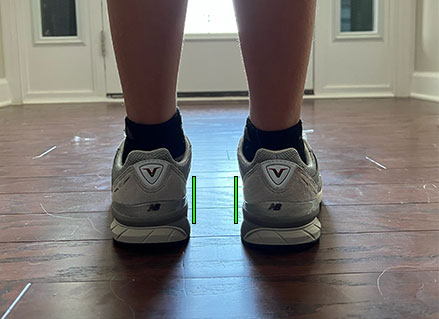
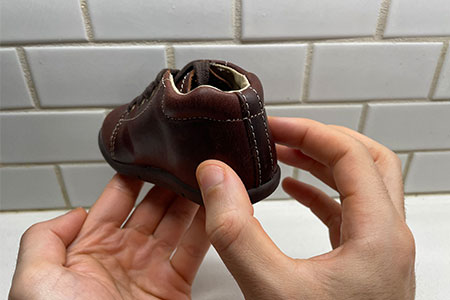

Thank you. I can’t tell you how much I appreciate your website and especially this article and the one on toe-walking. My 3 year old son is autistic and loves to run indoors; our family doesn’t wear shoes indoors, but your articles have helped me realize he needs a pair of indoor-only sneakers to help support his play. While occupational therapy and glasses have helped him decrease falls, we’ve long been on a waitlist for physical therapy to help him improve his balance and stability and ask questions about shoes. So much advice for families like mine is either expensive, difficult to access, or comes with a negative or ablest tone toward children with differences. I truly appreciate the clear and positive guidance here, especially the yes-no phones and direct links to shoes that work. I think we’re on a roll, but I will use your “how to measure kids feet” service if we get stuck on sizing.
Hello Belle,
I am glad that you find the website informative! I understand the challenges that many families go through and I am just here to make things a little easier. I will be here in case you have any questions.